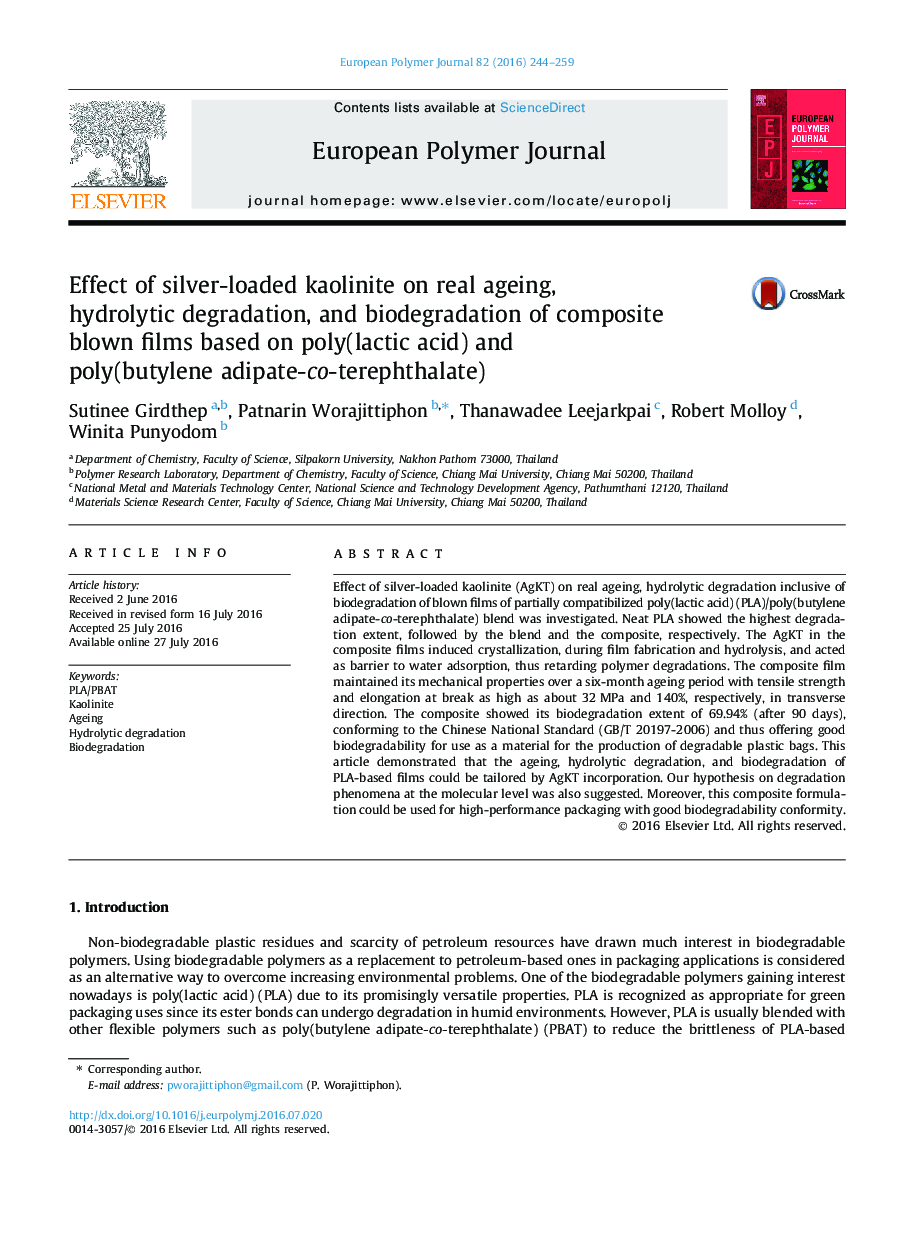| کد مقاله | کد نشریه | سال انتشار | مقاله انگلیسی | نسخه تمام متن |
|---|---|---|---|---|
| 1399147 | 1501353 | 2016 | 16 صفحه PDF | دانلود رایگان |
• Degradation profiles of PLA, PLA/PBAT, and composite with kaolinite were compared.
• Degradations were reported as real one-year ageing, hydrolysis, and biodegradation.
• Composite showed the highest degradation resistances compared to PLA and the blend.
• Composite biodegradation rate conformed to widely used standard for plastic bags.
• Degradations of PLA-based materials could be tailored by inclusion of kaolinite.
Effect of silver-loaded kaolinite (AgKT) on real ageing, hydrolytic degradation inclusive of biodegradation of blown films of partially compatibilized poly(lactic acid) (PLA)/poly(butylene adipate-co-terephthalate) blend was investigated. Neat PLA showed the highest degradation extent, followed by the blend and the composite, respectively. The AgKT in the composite films induced crystallization, during film fabrication and hydrolysis, and acted as barrier to water adsorption, thus retarding polymer degradations. The composite film maintained its mechanical properties over a six-month ageing period with tensile strength and elongation at break as high as about 32 MPa and 140%, respectively, in transverse direction. The composite showed its biodegradation extent of 69.94% (after 90 days), conforming to the Chinese National Standard (GB/T 20197-2006) and thus offering good biodegradability for use as a material for the production of degradable plastic bags. This article demonstrated that the ageing, hydrolytic degradation, and biodegradation of PLA-based films could be tailored by AgKT incorporation. Our hypothesis on degradation phenomena at the molecular level was also suggested. Moreover, this composite formulation could be used for high-performance packaging with good biodegradability conformity.
Graphical AbstractFigure optionsDownload as PowerPoint slide
Journal: European Polymer Journal - Volume 82, September 2016, Pages 244–259
